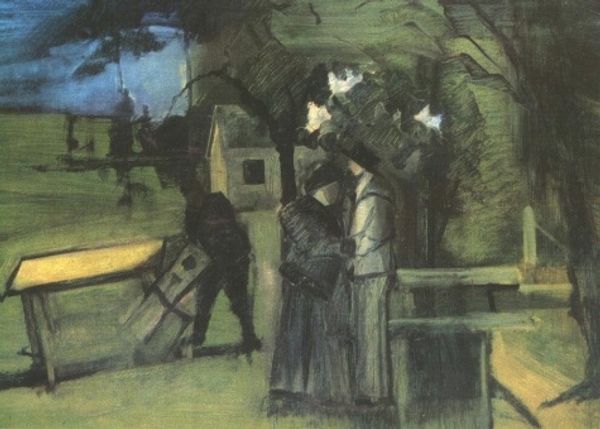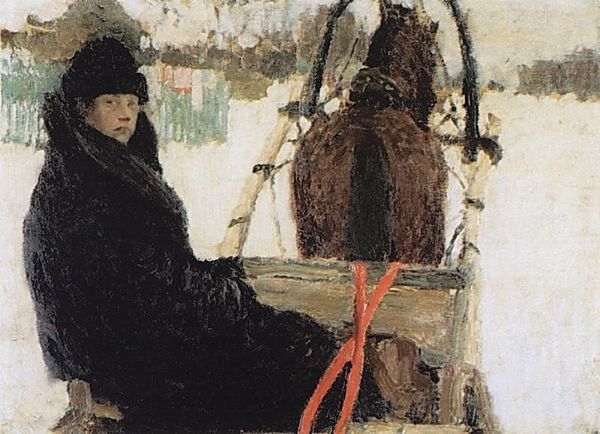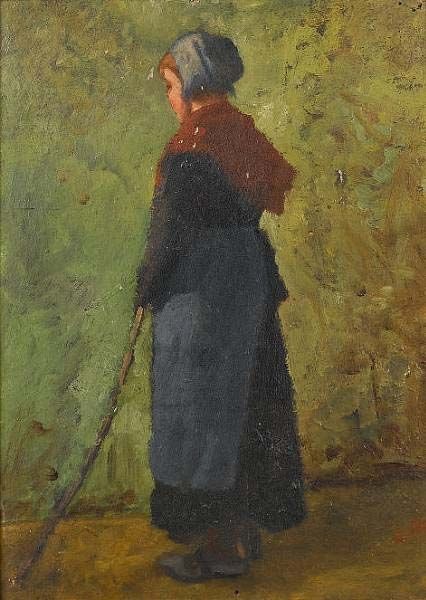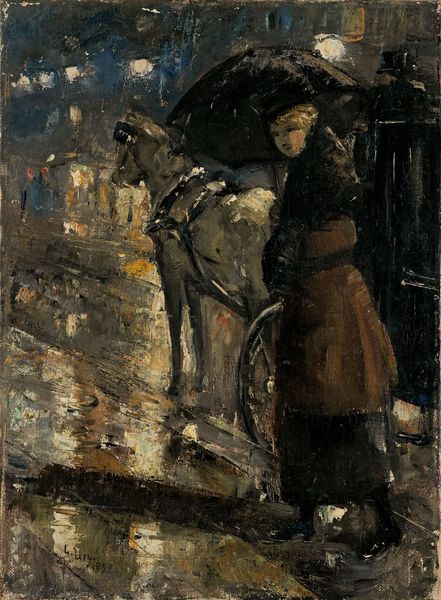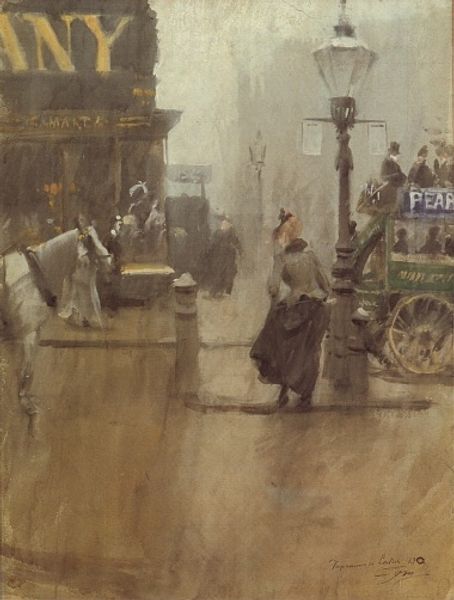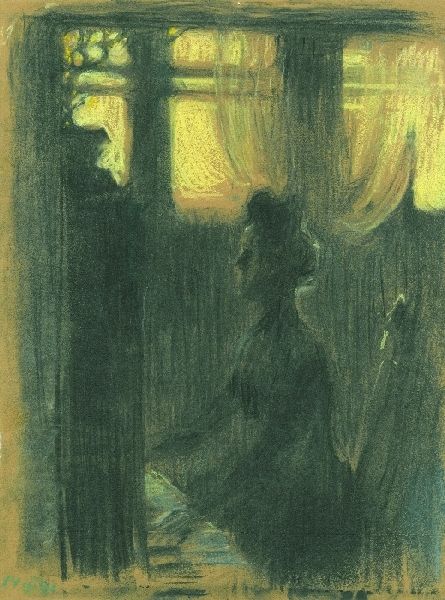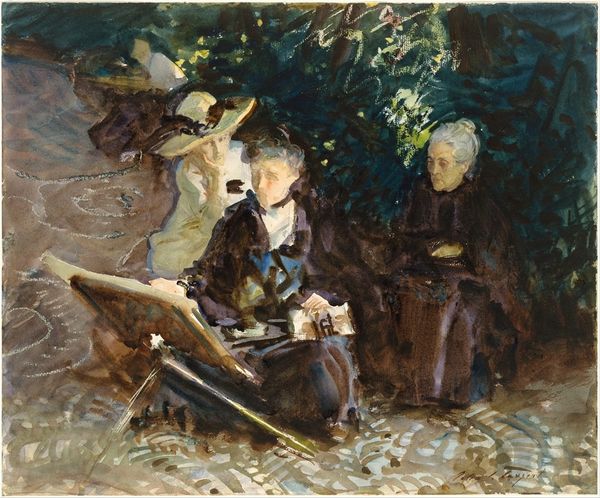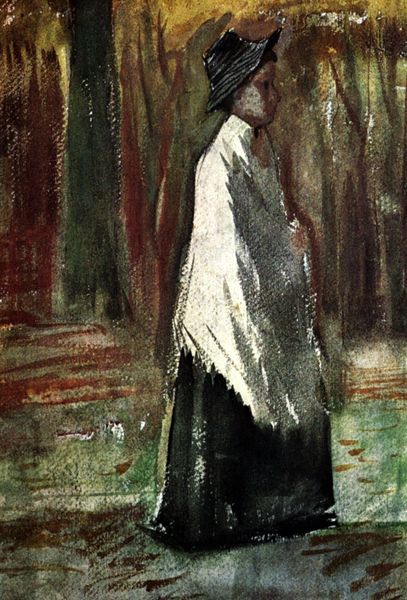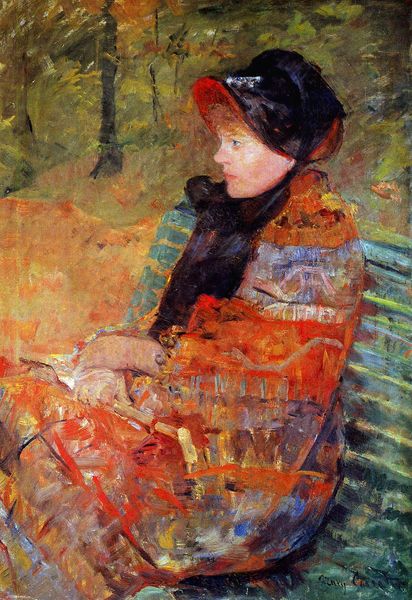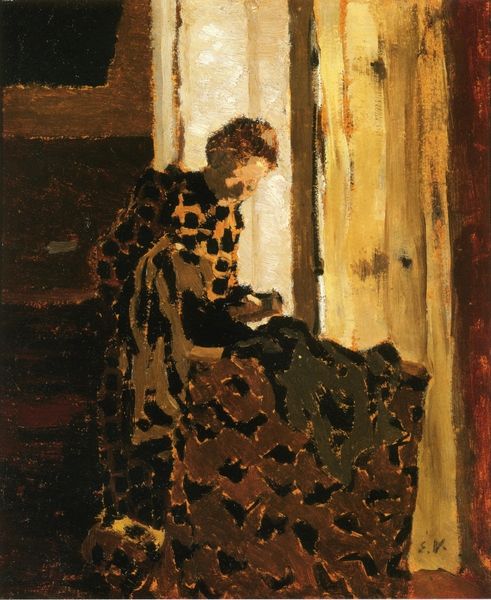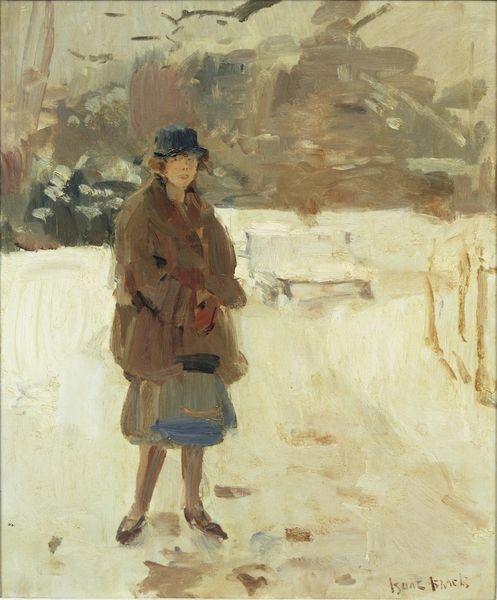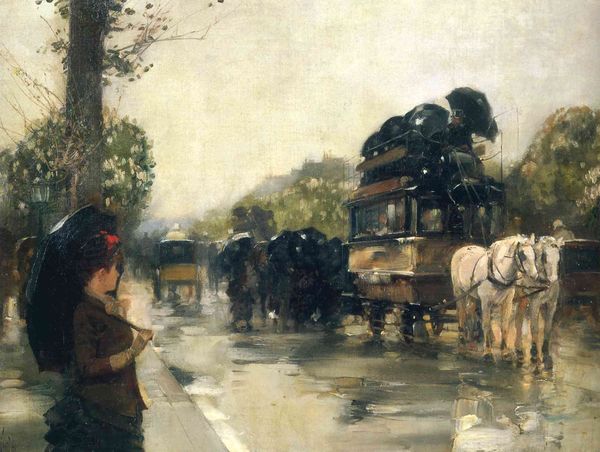
painting, oil-paint
#
portrait
#
painting
#
impressionism
#
oil-paint
#
figuration
#
cityscape
#
genre-painting
Copyright: Public domain
Curator: The colors in this piece feel like they're holding their breath, all shadowy browns and quiet greys. It’s as though the canvas is mirroring the clandestine nature of the scene. Editor: Indeed. We’re looking at “The Secret Rendez-Vous,” painted by James Tissot around 1890. Oil paint, of course. It’s such an interesting encapsulation of late 19th-century social dynamics through, well, paint. The woman appears as a wealthy bourgeois, descending into her transport of comfort, with complete authority. Curator: I find her utterly intriguing! Those spectacles... almost comical, but they veil a certain vulnerability. It's like she's teetering between societal expectation and forbidden desire, or maybe escaping drudgery for some spark of inspiration, eh? A midnight assignation with the Muse, perhaps? Editor: Well, let’s consider the physical implications. The coach signifies paid labour. The manufacture and assembly required countless hours by mostly unseen work forces and probably done so in unhealthy environments. Even the fact the wheels and trim are bright yellow implies extravagance. And this all assumes she owns it or pays the fare—either way the underclass props up her autonomy. Curator: A valid point. There’s a strong feeling of narrative tension, don't you think? The anonymity the city offers, amplified by the low light, it all feels like it could lead to tragedy. Perhaps it’s just me channeling too much Victorian melodrama, or am I seeing a stage setting, a set, like the opera house? Editor: To further the discussion, her outfit itself indicates class privilege; each stitch was put in place, likely by women earning paltry sums who never will taste what freedom clothing such as this signifies. And her masked attire further heightens the drama. It underscores the deliberate choices one must enact when negotiating power dynamics—even her gaze defies transparency, a product in its own right! Curator: I find it incredible how Tissot manages to compress the entirety of human drama within the constraints of what at first appears to be a genre scene. This makes me ponder where do our intentions end, and social pressures and restraints begin. Editor: Yes. The interplay between her aspirations and how the material conditions surrounding shape them is key. Every part is constructed from, and representative of, power imbalances. In the very application of oil paints onto canvas, so too were countless historical precedents to the material value of pigments themselves!
Comments
No comments
Be the first to comment and join the conversation on the ultimate creative platform.
